Not all leathers are created equal. Top-grain and full-grain leathers find their way into the highest quality wallets. So does corrected-grain. Split leather and bonded leathers (also known as reconstituted leathers), usually end up in lower-end wallets of varying quality.
What they all have in common is they get their start from tanned hides, usually cowhides. After a tannery receives hides from a slaughterhouse, it goes to work to transform it into the leather we all know and love.
In this post, I’ll briefly describe these leathers and give you some resources to find out more.
What is Top-Grain Leather?
With a name like “top-grain,” you’d expect it to be fantastic leather, and it is. As explained by the aficionados over at Mahi Leather, top-grain leather is the second highest-quality kind on the market. It’s essentially leather that’s had a wicked exfoliation treatment, the top layer buffed and sanded until there’s a blank, uniform canvas free of imperfections. If only all our spa days were so successful.
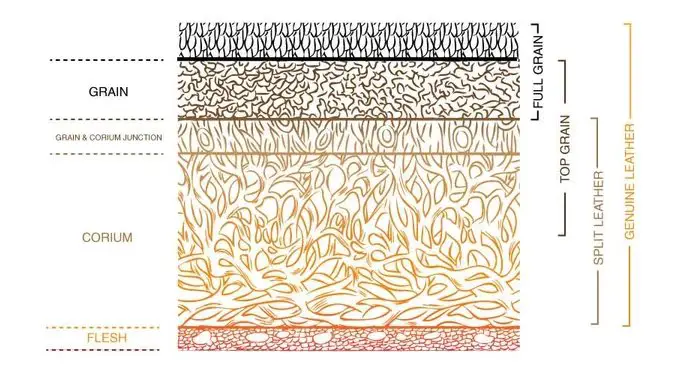
An imitation grain is sometimes applied after this, giving it a more even appearance while also providing some handy stain-resistance lacking in other kinds of leather. With this extra treatment christens, this kind of top-grain leather is often called “corrected grain” leather for obvious reasons.
What is Full-Grain Leather?
Despite sounding more like an option you’d find in a Wholefoods bread aisle than anything else, full-grain leather is actually among the best leather money can buy.
Basically, it’s created by just removing the fur, keeping the grain fully intact, and immediately starting the tanning process. This leaves the resulting leather stronger, more durable, and more natural-looking than its top-grain counterparts.
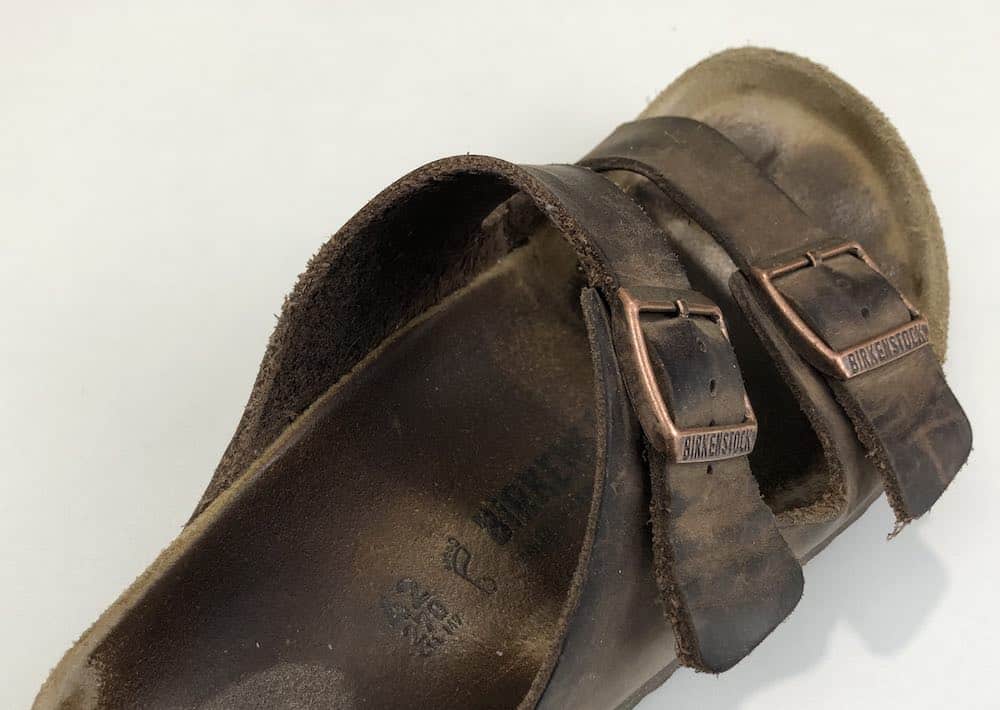
Some full-grain leathers still get dressed up a bit for special occasions. Usually, this consists of coating them with a special wax to create “crazy horse leather,” a leather that has a beautiful appearance and completely illogical name. Smoother and shinier than many full-grains but with more character than top-grains, it’s the best of both worlds.
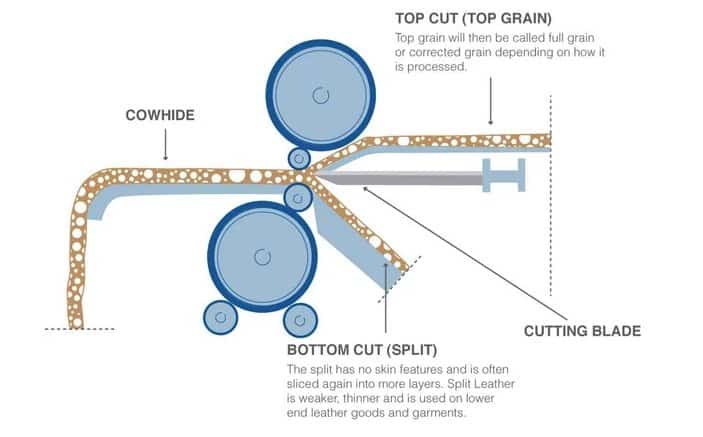
Which leather is better for wallets?
All the basic boring bits aside, what leather should you pick? The answer depends heavily on your aesthetic.
If you’re the kind who always appreciates versatile, minimalistic basics, then a top-grain wallet is likely to be your ideal match thanks to its uniform color and smooth finish. So that means all boy-next-door, weekend warrior, self-proclaimed “young professional,” and basic pumpkin spice types should move to the front of the line.
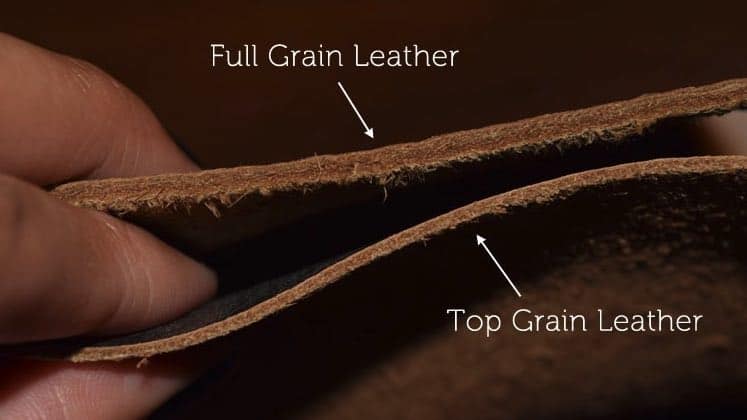
Meanwhile, those who appreciate something with a little more rugged, raw character would probably be better to opt for full-grain because it has a more natural look and develops a lovely, customized patina over time. Dad-friends, actual dads, non-ironic hipsters, and more casual types, you’re up.
Warning! You want to stay away from any wallet that says “genuine leather.” That’s because it usually means split leather, which is the weakest part of the hide, closest to the cow’s flesh. Genuine leather can also mean reconstituted or bonded leather which is leather scraps that have been glued together. That’s even worse.
The terminology can be confusing (and deceiving) because genuine leather technically includes the entire tanned hide. But in the leather and wallet-making industry, it means the cheap stuff. Avoid it like the plague.
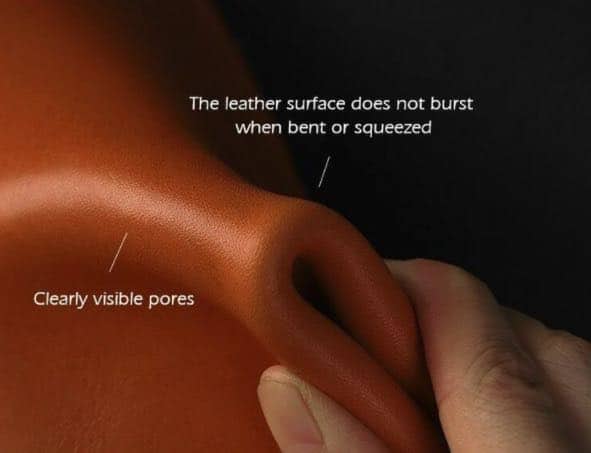
Aesthetics (and mild, teasing shade) aside, you need also to keep functionality in mind when you’re choosing your preferred leather. Wallets go through a shocking amount of abuse day in and day, hastily stuffed in pockets, thrown in bags, and maybe even sat on by those who didn’t bother read my other recent article (No Wallet in Hip Pocket). You’ll need the right durability to keep up with it all.

Top-grain can stand up pretty well and is often “prettied up” with designs and embossing. But if you want the really tuff stuff, seek out full-grain, please.
The moral of the story is to go with full-grain whenever you can. But don’t be afraid of top-grain leather. They’ll both give you one heck of wallet. Stick with these two types of leather whenever you can. You’ll thank me later.
How leather is made, step by step

What types of leather are there?
The Leather Hide Store created an excellent glossary of leather types and terminology. Here are a few excerpts:
Embossed leather
“A process where the cowhide is stamped or rolled under great pressure to create a new grain on the surface of the hide. Pebble grain may be the most common example but can include countless faux animal prints, designs, and natural grains meant to mimic the original grain of the hide. Embossing is typically applied to corrected grain leather.”
Nubuck leather
“A top grain leather whose surface has been buffed and brushed to create a soft, suede-like look and feel. Nubuck is much stronger and durable than suede but does not have the wear and stain resistance common to other top grain leathers.”
Corrected grain leather
“Leather that has been “corrected” through buffing away natural markings and major blemishes on the leather’s surface. Once the surface is uniform, it is embossed typically into a natural or pebble grain pattern and pigmented (colored). The majority of upholstery leather is corrected grain.”
You can read their entire leather glossary here.


